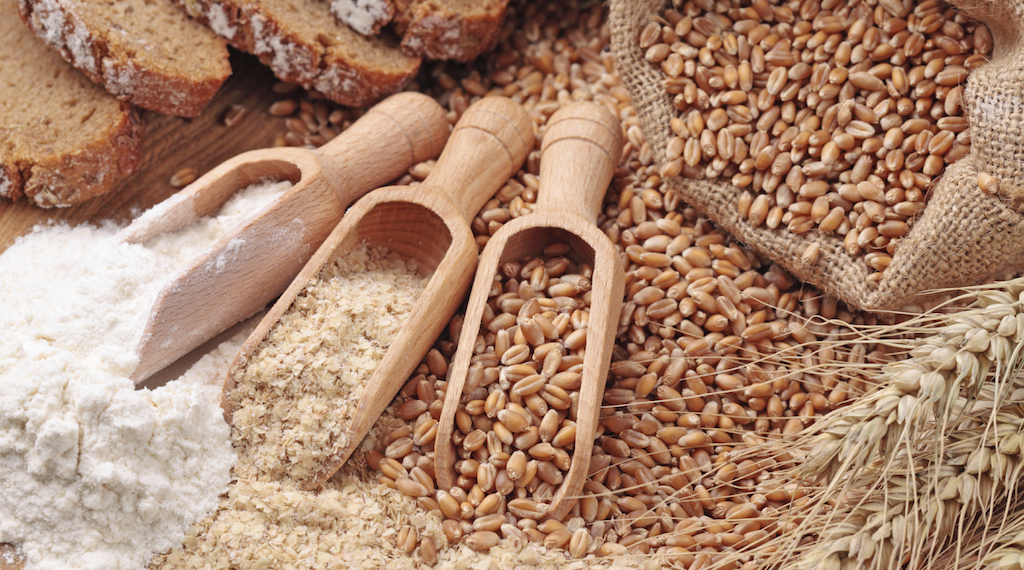There are many types, some even gluten-free, and should be integrated into our diet to recover so many nutrients that are lost in refined flour. And to ward off the onset of diseases like diabetes or obesity
The flours are not all the same, there are refined, wholegrain, with or without gluten, each with a particular wealth of nutrients that helps our health. Learn to use the alternative flours wheat 00 is useful for taking on different nutrients and allows you to revisit even the most traditional recipes in a more healthy way.
Better to vary
The most common and used for savory and sweet preparations is 00 wheat, among all that less rich in nutrients: the refining processes to which it is subjected deprive it of fibers altogether, with the result that the starches it contains are more easily assimilated. This causes a rapid rise in blood glucose levels, resulting in an increase in insulin, the hormone that helps cells take advantage of glucose to produce energy. Important levels of blood glucose and insulin in the body can predispose, over time, to the development of metabolic diseases such as obesity or diabetes. For this reason it would be appropriate to learn to use other types of flour, less refined and richer in nutrients.
Of rye, spelled, millet and other whole grains
The secret is this: choose wholemeal flour, because they preserve all the nutrients present in the germ, the soul of the grains (rich in mineral salts, amino acids and vitamins) and in the bran (the part that covers every grain, rich in fiber). There are several, each with features that make them perfect for preparing desserts, pizzas or pasta. Let's see some of them.
Whole rice flour
It is light and rich in starch perfect for making cakes. Gluten-free, it is a valid alternative to wheat for those suffering from celiac disease and is perfect for preparing pasta or gnocchi. It is excellent as a thickener for creams or puddings.
Whole rye flour
This flour is used to prepare the black bread, typical of some Italian regions such as Trentino. Combined with spelled flour and whole wheat it is useful for the preparation of biscuits and breadsticks.
Quinoa wholemeal flour
With quinoa you get a flour that you can prepare with cookies or cakes, suitable for those suffering from celiac disease, because quinoa does not contain gluten. It is rich in mineral salts such as calcium, iron and potassium. Combined with spelled or oat flour, it is excellent for preparing fresh pasta or savory products.

Whole oat flour
It is rich in fiber and the products made with this flour have the characteristics of being very filling. It is often used together with spelled flour to make bread or baked desserts. It is also used as thickener for creams or velvety.
Whole millet flour
It is perfect for those suffering from celiac disease because it is gluten-free. Has a taste that tends towards sweetness, it is very digestible and is also used for feeding newborns. It is also a source of silicic acid, which plays a very important role on the immune system.
corn flour
It is obtained by grinding corn grains and differs depending on how refined the grinding process is: bramata has the largest grain and is used to prepare polenta; the foil is finer and used for less consistent cakes or polenta; the corn comic is the finest one, perfect for confectionery.
Whole wheat barley flour
This flour has a very low glycemic index, is low in gluten and therefore is not suitable for preparing bread unless mixed with others. It is recommended to do fresh pasta and in some regions (and in some African cuisines) it is used to make the cous cous instead of durum wheat semolina. It is rich in mineral salts like calcium, iron and phosphorus, and is recommended to women because it stimulates the production of breast milk.
Kamut flour
Excellent to use for pizzas, bread, cakes or biscuits, Kamut flour is rich in lipids and therefore very energetic. Contains gluten and is not recommended for those suffering from celiac disease. Perfect for preparing the carrot cake or the classic jam tart, is more digestible than wheat.
And now some recipes from our archive
This recipe has already been read 274 times!